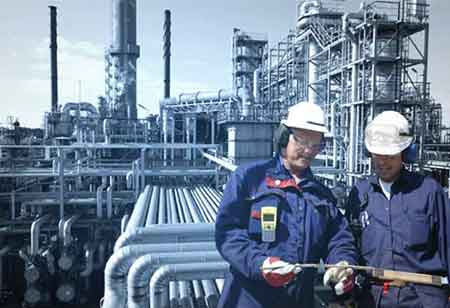Thank you for Subscribing to Energy Business Review Weekly Brief
Effective Pipeline Management Practices to Prevent Hazards and Maintain Integrity
Proper pipeline management is essential to safe and efficient oil and gas transportation.

By
Energy Business Review | Tuesday, December 05, 2023
Stay ahead of the industry with exclusive feature stories on the top companies, expert insights and the latest news delivered straight to your inbox. Subscribe today.
Regular inspections, proactive maintenance, and adherence to safety procedures are essential for maintaining the integrity of pipelines and minimizing the environmental impact of the oil and gas industry.
FREMONT, CA: Proper pipeline management is essential to safe and efficient oil and gas transportation. These products are highly volatile in nature and require meticulous handling to ensure their safe passage. Effective pipeline management involves a comprehensive approach that includes regular inspections, maintenance, and preventive measures to minimize risks and potential hazards associated with these valuable resources. Large volumes of products are transported over vast distances by pipelines in the oil and gas industry. These pipelines are subjected to various environmental factors, operational stresses, and corrosion, making them susceptible to wear and tear. Any fault or damage left unattended can lead to severe consequences, such as gas explosions, property damage, and environmental pollution.
Proper pipeline maintenance ensures the pipelines' structural integrity and associated components. Identifying potential problems before they escalate into major problems requires timely repairs, cleaning, and routine inspections. By proactively addressing minor defects and corrosion, companies can prevent catastrophic events and protect the environment.
Safety is paramount when dealing with flammable materials like oil and gas. Workers involved in pipeline maintenance must be equipped with the appropriate protective gear to safeguard themselves from potential hazards. These safety measures are a prudent step in an accident or emergency, preventing fires from escalating and limiting property and environmental damage. Creating designated muster points for workers during emergencies helps organize and manage responses effectively.
It is beneficial to follow a schedule to ensure pipeline maintenance is carried out efficiently and on time. This can be achieved through automated systems or a calendar that sets specific inspections and maintenance task dates. Effective communication is also critical to ensure everyone involved in the pipeline management process is informed and can take the necessary actions to adhere to safety procedures and maintenance schedules.
Pipeline maintenance should be handled by a specialized maintenance team with the right expertise, experience, and tools. In particular, pipelines are often laid underground, making manual digging around them challenging and risky. Companies can invest in hydrovac services for oil and gas pipelines to avoid damage and injury. The hydro excavation method requires fewer resources, is safer, and minimizes potential risks when digging around pipelines.
Proper installation of gas pipelines is equally vital to facilitate smooth operations and swift repairs when necessary. Adequate installation ensures that pipelines are laid with clear pathways, minimizing the chances of blockages and obstructions. In case of a breakdown or fire hazard, the efficient installation allows for quick and effective responses to mitigate potential damages.
Modern technology plays a crucial role in pipeline management. Using detailed layouts showing the locations of pipelines aids in predicting areas that might be affected by gas leaks, enabling swift actions to contain and resolve potential incidents. Moreover, tracking flow parameters through sensors allows for continuous monitoring of the pipeline system, detecting errors or abnormal operations before they escalate into more significant problems. Installing sensors and employing control systems can enhance safety during maintenance or emergencies. Sensors in case of a gas line break or a malfunction can trigger automatic shutdown systems. This prevents further damage by directing flow through alternative routes or shutting down specific plant sections without a complete system shutdown.






